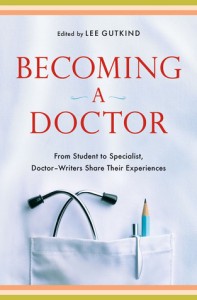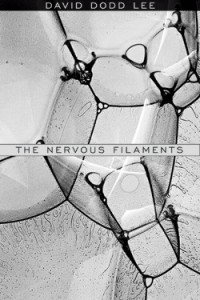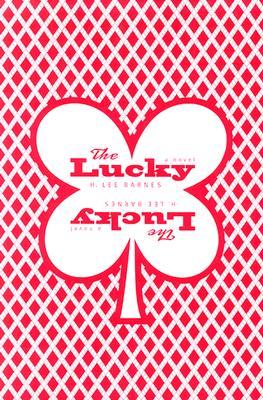 On Craft: Escaping the Paradigm
On Craft: Escaping the Paradigm
Lately I’ve noticed in some of the work of colleagues and students and especially in my own work the tendency to stay within the safety of self-created paradigms. By this, I mean that as individual narratives progress, writers who have had success with prior narratives often find themselves employing similar strategies to resolve the challenges and exploit the possibilities offered in their current work.
A writer who tends to ‘muscle up’ in an ending will repeat that tendency in his next ending, having experienced success with it. Or, a writer who tends to “disappear” one of her characters in one novel will have another character vanish in another novel. I’m always impressed by those writers who are capable of doing almost everything seemingly new from book to book, and yet that seems like an almost impossible task.
Still, sometimes it’s worthwhile to set out for oneself what has been accomplished in a prior work, literally listing its elements and grinding them into one’s consciousness, before proceeding with the next work. Point of view, setting, pivotal plot points, the treatment of time can all be boiled down to just a few words, and suddenly there on the page is your novel in a nutshell, and you can see exactly what it is the past work wasn’t doing that you might pursue in the next work.
Also, it can’t hurt to note featured characteristics of the protagonists and supporting cast. Does every family have an abandoned father? Is every family missing a sibling? Is every son restless and unemployed? Is the boss at work always kind and understanding? Is there someone always ripping someone else off? Is someone’s heart always getting broken? Is the kitchen always the dominant room in the house? Is it the mailman who always delivers the bad news, or email, or the phone line?
What I’m looking for in this kind of exercise is a way of challenging myself to try as much new technique and content as possible in the next work.
This isn’t to say that writers shouldn’t mine deeply what Richard Burgin terms their own “emotional real estate,” but that an awareness of all the strategies and characteristics being employed can be helpful in making the new work as fresh and surprising as possible, not only for the reader, but for the writer as well. There is, for an obvious example, a lot of different technique and content accomplished from DUBLINERS through PORTRAIT OF THE ARTIST AS A YOUNG MAN to ULYSSES, even while we can clearly see some of the sameness involved.
A few months ago, I sat down with a list of all my stories and manuscripts and was able to capture pretty clearly all the work in close to two paradigms, with all the tried and true crutches that I had been leaning on. Then I wrote the opposite of each of the elements, just to see what that would look like. It was pretty invigorating to recognize that as a writer there were still a lot of techniques and types of content I haven’t even tried, here at the age of 52, having been taught in a hundred workshops and having led a few thousand more, with a handful of novels and a bucketful of stories published, and four times that dropped into trash cans and recycling bins over the past thirty-some years.
What we sometimes learn from studying and deconstructing the straitjacket of Freytag’s Triangle is that all the stories imaginable have already been written, but what we might learn from a cold-hearted study of our own work is that there is likely a lot we haven’t tried.
On Industry: Free Content—the other side of the coin
Recently a writer told me that the next new thing is free content. Okay, maybe not so recently, but at least within the last year. Free content is it, she said. Everyone needs to blog and everyone needs to offer some good free writing in order to further their careers. And the argument was clear: eventually free content will get you paid.
I don’t believe in free content. At all. Although of course I am a reader of free content all the time, especially on news websites and facebook links and espn.com and philly.com (my hometown). I love free content. And it is despicable, too, when it is both delivered free and obtained from the writer for free.
Writers should be paid, like dentists should be paid and gardeners should be paid and cooks should be paid. While it’s certainly true that on some of these websites the writers are getting paid, increasingly literary writers are willing to donate their words in the hope that down the line eventually they’ll get paid. It makes me nervous and it makes me sad.
We cling to the success stories of self-publication and gratis publication, in the hope that there will be a spread of success, but these realized dreams are the exception rather than the rule. Yet as writers we are trained to write for a larger audience, because otherwise the writing is private and therefore not real, and this leads us again to the desire to share the work any way we can, and more often than not (considering that over one million people in the U.S. say they write), that sharing has been free of charge for the reader and free of income for the writer.
You might think that by arguing against free content, I am, as a new contributor to Superstition Review, biting the hand that feeds me. But SR isn’t feeding me anything, and there’s a good argument that it is actually taking food from my mouth. How did this happen? I stumbled across the website a few months ago, thought it very spiffy and professional and compelling, and sent in a story, assuming (and we all know about assuming) that payment would be involved if the piece were taken. But any moron who takes a closer look can see that that is not the case. My error.
Every publishing endeavor and every educational endeavor I have designed (this includes MFA programs in Europe and Latin America and Charlotte, a summer program in Roanoke, a small press out of North Carolina, and a literary magazine very new to the world) will always pay writers something for almost everything they do, the exception being the reading and selection of work. At Unboxed Books, none of us got paid, when we ran a contest for a 5000 prize in fiction, though the final judge got paid and of course the winner got 5000. At Qu, the new literary magazine out of the MFA Program at Queens University of Charlotte, we pay for every accepted piece (all right, very modestly, but still we pay), while the readers don’t get paid at all. Now I’m wondering if that is a double standard. I guess not, because for graduate students and interns involved in reading and selecting work, the work experience constitutes a kind of payment. In that sense, I can see now, it is not much different from publication without income. And yet I do feel differently about the two. I could probably make a lame and garbled argument about free work’s benefit being limited to the individual and free writing’s benefit being consumed by the masses, and I’m sure you could go ahead and skewer that.
So what’s your take? How important is payment for your writing, compared to the publication credit? Can I go tell my boss in Charlotte that instead of increasing payment to Qu contributors what we really want to do is eliminate it entirely? Or should we reconsider the nonpayment of contest and slush pile readers and rehash the now old argument about the ethics of unpaid internships? Would you rather see our scant funds devoted to enhanced website design or the small honoraria we pay for accepted work? All things being equal, is it more important to you to have your work appear somewhere aesthetically pleasing or somewhere that pays you?
Or, as my father once asked me in a surprisingly meaningful ‘career’ quiz: which do you value the most? Money, Power, or Achievement?
Choose one.
And, yeah, I wrote this piece for free.
 We’ve all been there. Sitting at the computer desk or lying in bed with a laptop opened to a blank Word document. The cursor flashing, taunting you just like that cheesecake at last night’s party that you refused to eat because you want to lose five pounds. It’s the dreaded writer’s block. Flash, flash, flash. But nothing comes.
We’ve all been there. Sitting at the computer desk or lying in bed with a laptop opened to a blank Word document. The cursor flashing, taunting you just like that cheesecake at last night’s party that you refused to eat because you want to lose five pounds. It’s the dreaded writer’s block. Flash, flash, flash. But nothing comes.







